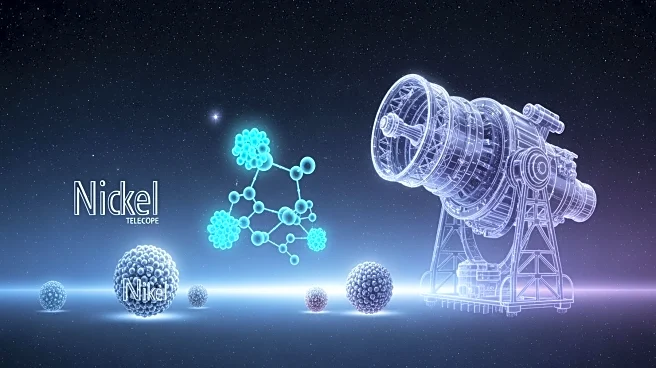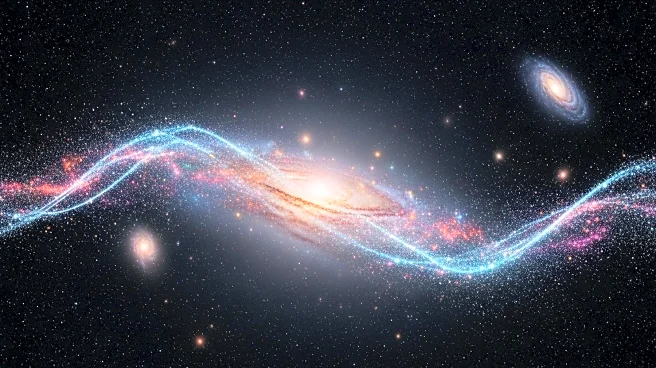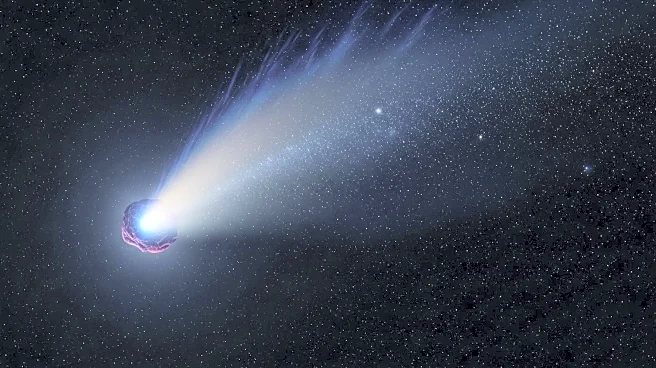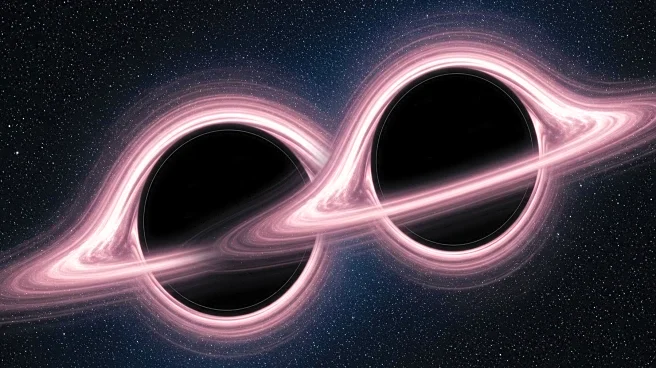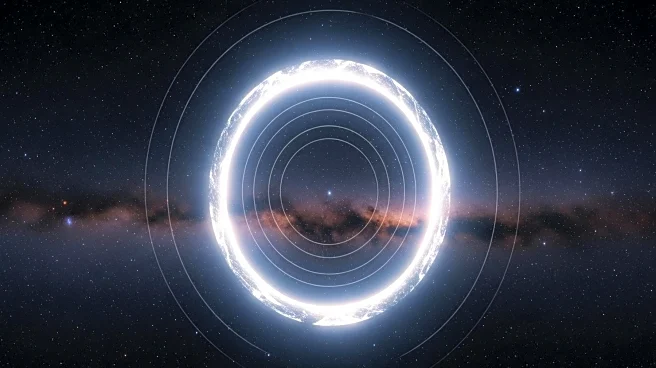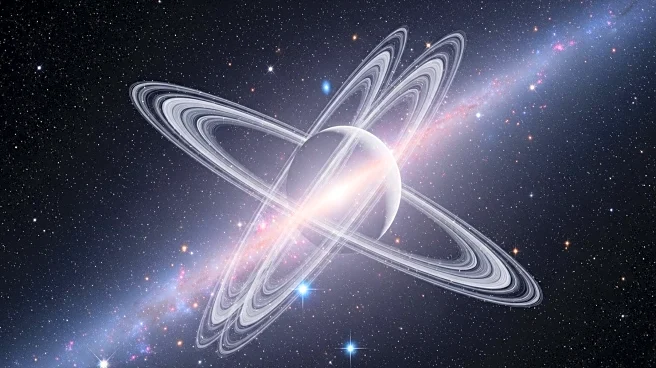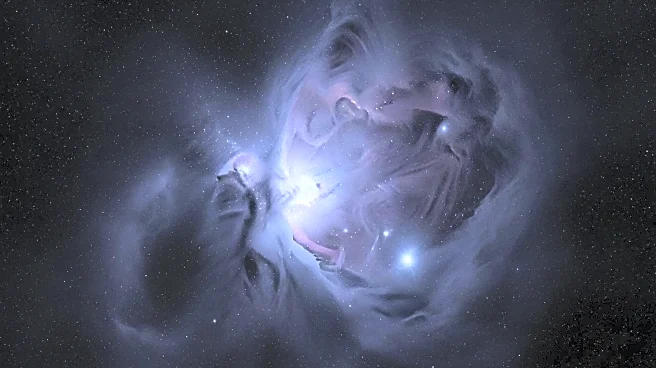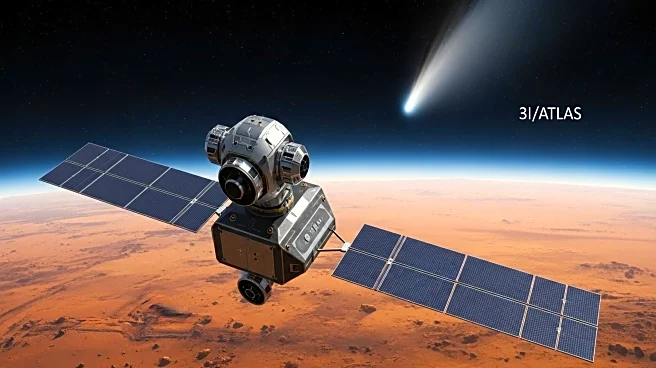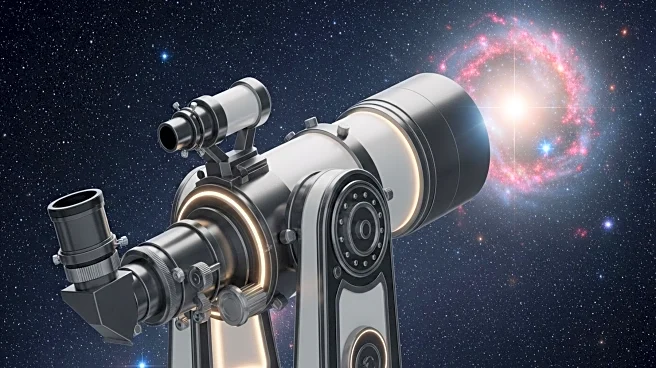What's Happening?
Recent observations from the Keck II telescope in Hawaii have revealed unusual emissions of nickel and cyanide around the interstellar object 3I/ATLAS. The data, collected on August 24, 2025, shows a puzzling
anti-tail extension in the direction of the Sun, with prominent nickel emissions but no evidence of iron. This anomaly is typically seen in industrially-produced nickel alloys, suggesting a natural carbonyl process near the object's nucleus. The emissions extend to a radius of 600 kilometers for nickel and 840 kilometers for cyanide, with a higher production rate of nickel relative to cyanide compared to other comets. The findings add to the classification of 3I/ATLAS as an outlier among known comets.
Why It's Important?
The discovery of nickel and cyanide emissions around 3I/ATLAS challenges existing classifications of interstellar objects and comets, potentially altering our understanding of their composition and formation processes. This anomaly could provide insights into the chemical pathways active in space, offering clues about the conditions and materials present in the early solar system. The research may also impact the study of interstellar objects, prompting scientists to reconsider the criteria used to classify and analyze these celestial bodies. Understanding these anomalies could lead to new theories about the origins and evolution of comets and other interstellar objects.
What's Next?
Further observations are expected from the HiRISE camera onboard the Mars Reconnaissance Orbiter, which will provide a side view of 3I/ATLAS with higher resolution. Additional data from the Juice spacecraft in November 2025 and the Juno spacecraft in March 2026 will offer more insights into the object's characteristics. These observations will help clarify the nature of 3I/ATLAS and its anomalies, potentially leading to new classifications and theories about interstellar objects. Continued research will focus on gathering high-quality data to better understand the chemical processes occurring around 3I/ATLAS.
Beyond the Headlines
The study of 3I/ATLAS highlights the importance of advanced telescopic technology in uncovering the mysteries of interstellar objects. The findings emphasize the need for interdisciplinary collaboration in astronomy, combining expertise in chemistry, physics, and space exploration. The research also underscores the potential for unexpected discoveries in space, challenging existing paradigms and encouraging scientists to explore new avenues of inquiry. As more data becomes available, the scientific community will continue to refine its understanding of interstellar phenomena and their implications for the broader universe.
